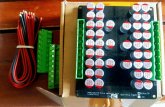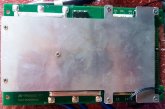Alfalfameister
New Member
- Joined
- Feb 21, 2020
- Messages
- 50
For the record, I am top balancing my LiFePO4 cells (https://diysolarforum.com/threads/top-balancing-recommendations-fastest-or-best-practices.12179/)
But, just hypothetically, and out of curiosity, do you need to top-balance if all these conditions are met/placed:
(for 280Ah cells)
1. All your cells are brand new, ranging from 3.28v to 3.33v;
2. You plan to use a charge voltage (for a 51.2v pack) of only 54.4V (which comes out to 3.4v average);
3. You have a BMS that has a 2A balancer OR you have an active balancer anyway;
4. You set your HVD to 3.6, and your LVD to 2.9 in your BMS (but your inverter charge voltage is 54.4v (avg 3.4v) and inverter disconnect is at 48v (avg 3.0v))
Basically, you plan to charge to only 90%ish (54.4V), and probably use only 70% capacity, or down to about 20% SoC.
Would you need to do an initial balance since (though it may take weeks/months), it will eventually balance (up to a certain degree) with the BMS balancer or a separate active balancer anyway?
Just curious. Thanks for any answers.
But, just hypothetically, and out of curiosity, do you need to top-balance if all these conditions are met/placed:
(for 280Ah cells)
1. All your cells are brand new, ranging from 3.28v to 3.33v;
2. You plan to use a charge voltage (for a 51.2v pack) of only 54.4V (which comes out to 3.4v average);
3. You have a BMS that has a 2A balancer OR you have an active balancer anyway;
4. You set your HVD to 3.6, and your LVD to 2.9 in your BMS (but your inverter charge voltage is 54.4v (avg 3.4v) and inverter disconnect is at 48v (avg 3.0v))
Basically, you plan to charge to only 90%ish (54.4V), and probably use only 70% capacity, or down to about 20% SoC.
Would you need to do an initial balance since (though it may take weeks/months), it will eventually balance (up to a certain degree) with the BMS balancer or a separate active balancer anyway?
Just curious. Thanks for any answers.





